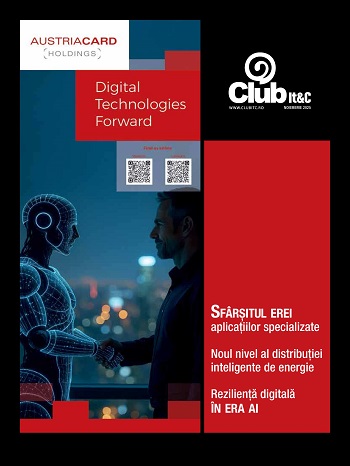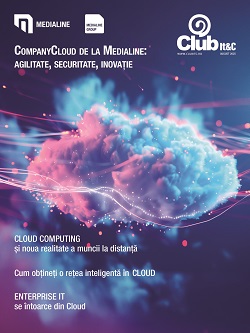
In his book Antifragile: Things That Gain from Disorder, Nassim Taleb explores the concept of antifragility, a trait that enables systems to not only withstand shocks and disruptions but to grow stronger from them. Unlike fragile systems that break under pressure or resilient systems that resist but remain unchanged, antifragile systems thrive and adapt in the face of uncertainty.
Taleb’s principles offer a fresh perspective on how businesses can build robust strategies to handle unpredictable events, an approach that resonates strongly with modern data protection strategies, particularly the 3-2-1 backup rule in cloud computing.
For businesses that depend on data for their daily operations, ensuring the protection, accessibility, and recoverability of that data is critical. This is where LifeinCloud’s cloud computing and managed IT solutions come into play, offering the structure and support necessary to achieve antifragility. A key component of this approach is the 3-2-1 backup rule—a fundamental strategy in data management that turns theory into practice.
Understanding the 3-2-1 Backup Rule:
The 3-2-1 backup rule is a simple but powerful guideline for data protection:
1. 3 Copies of Data: Always have at least three copies of your data—one primary and two backups.
2. 2 Different Media Types: Store these copies on at least two different types of storage media (e.g., cloud storage and local hardware).
3. 1 Offsite Copy: Keep one of these copies in the cloud to protect against physical disasters such as fires, floods, or theft.
 In Antifragile, Taleb argues that “the best way to verify that you are alive is by checking if you like variations.” Similarly, the 3-2-1 rule ensures that your data can “survive” in varying situations by distributing it across multiple environments and using different media types, which inherently builds redundancy and reduces the risk of total data loss.
In Antifragile, Taleb argues that “the best way to verify that you are alive is by checking if you like variations.” Similarly, the 3-2-1 rule ensures that your data can “survive” in varying situations by distributing it across multiple environments and using different media types, which inherently builds redundancy and reduces the risk of total data loss.
Why the 3-2-1 Rule Is Critical for Data Protection:
The essence of the 3-2-1 rule is its focus on minimizing single points of failure. In an era where cyberattacks, hardware failures, and human errors can disrupt business operations, adhering to this rule can be the difference between business continuity and catastrophic loss. LifeinCloud’s managed IT services integrate this rule as a foundational principle for data protection, ensuring that businesses have the resilience they need in an unpredictable digital landscape.
Here’s why the 3-2-1 rule is so effective:
• Data Redundancy: With three copies of data stored in different locations, businesses are safeguarded against hardware failures, software corruption, and accidental deletions. If one copy is lost or compromised, there are always two more to fall back on.
• Media Diversity: Storing data on two different media types reduces the likelihood of simultaneous failures. For example, a cloud-based backup can act as a fail-safe if an on-premises server experiences a malfunction.
• Disaster Recovery Readiness: The offsite copy, usually stored in the cloud, protects against physical disasters that could destroy on-premises backups. If a natural disaster or theft affects your primary site, the offsite backup ensures your data is still accessible.
In Antifragile, Taleb emphasizes, “If you have more than one reason to fail, and the reasons can combine, you must assume that failure will occur.” The 3-2-1 rule acknowledges this reality by ensuring that even if one or two failure points occur, the system can still recover and continue operating.
Creating Antifragility Through the 3-2-1 Backup Rule:
Adopting the 3-2-1 backup rule is not just about compliance, it’s about creating an antifragile data protection strategy. By leveraging cloud solutions like those provided by LifeinCloud, businesses can go beyond traditional resilience and gain the ability to adapt, recover, and even thrive in the face of adversity.
1. Gaining from Disruption: Just as Taleb suggests that “Antifragile systems are not just resilient; they gain from stressors and chaos,” implementing the 3-2-1 backup rule enables businesses to not only recover from disruptions but to learn and improve from each incident. For example, regular testing and refinement of backup and recovery processes expose vulnerabilities, leading to stronger and more refined protocols over time.
2. Cloud Computing for Scalability and Flexibility: Cloud computing is inherently antifragile because it can scale up or down based on real-time demand. LifeinCloud’s cloud services allow businesses to store data in two regions, Bucharest & Frankfurt, and quickly shift resources during peak loads or unforeseen disruptions. This flexibility is key to handling the “black swan” events that Taleb describes—unpredictable occurrences that have a massive impact.
3. Fast Recovery for Business Continuity: The 3-2-1 rule, combined with cloud-based recovery solutions, ensures rapid restoration of data. By using LifeinCloud’s automated backups and real-time recovery tools, businesses can reduce downtime from hours or days to mere minutes.
As Taleb notes, “Time is what builds antifragility,” and minimizing recovery time is essential for ensuring that a business not only survives a disruption but emerges stronger.
4. Reduced Operational Complexity: Traditional IT systems can become fragile due to their complexity and interdependence. Cloud-based implementations of the 3-2-1 rule simplify data management by centralizing control, automating backups, and providing a single pane of glass for monitoring. This reduction in complexity builds the robustness needed to adapt to changing circumstances.
Building an Antifragile Data Strategy with LifeinCloud:
Implementing the 3-2-1 rule using cloud solutions requires more than just choosing the right cloud provider, it requires a partner who understands the nuances of data protection, compliance, and business continuity. LifeinCloud’s managed IT services offer tailored solutions that integrate the 3-2-1 backup rule into a broader strategy of risk management and business resilience.
1. Automated Backups and Testing: LifeinCloud automates backups in two locations, ensuring compliance with the 3-2-1 rule. Regular testing and validation are performed to ensure that all backup copies are complete and can be restored without issue, making your data strategy not just resilient but antifragile.
2. Offsite and Cloud-Based Backup Solutions: With LifeinCloud’s offsite and cloud-based solutions, businesses can store critical data in secure, geographically dispersed data centers. This protects against local disasters and creates a level of redundancy that is difficult to achieve with traditional on-premises systems.
3. Proactive Threat Monitoring and Response: LifeinCloud offers continuous monitoring and proactive threat response to identify potential risks before they can affect your data. This allows businesses to detect and mitigate vulnerabilities, turning potential disruptions into learning opportunities.
Conclusion: Turning Fragility into Strength with LifeinCloud
As Nassim Taleb explains in Antifragile, “Some things benefit from shocks; they thrive and grow when exposed to volatility, randomness, disorder, and stressors.” The 3-2-1 backup rule, when implemented through cloud computing and managed IT services, transforms a business’s data strategy from merely protective to truly antifragile.





























